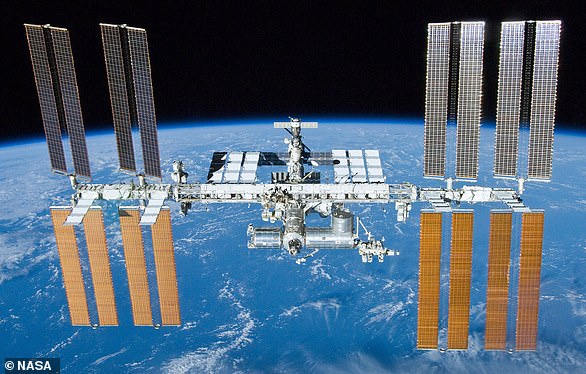The Northern Lights – a stunning natural light show – are usually only visible from Earth.
But lucky astronauts aboard the International Space Station (ISS) were treated to a unique view of the spectacle, with Earth in the background.
Amazing video footage shows the brilliant green stream of wispy light covering thousands of miles across our planet.
In the foreground is Boeing’s cone-shaped Starliner capsule, which was originally supposed to have returned to Earth by now.
The clip was filmed by NASA’s Matthew Dominick aboard the ISS, which orbits Earth about 250 miles above sea level.
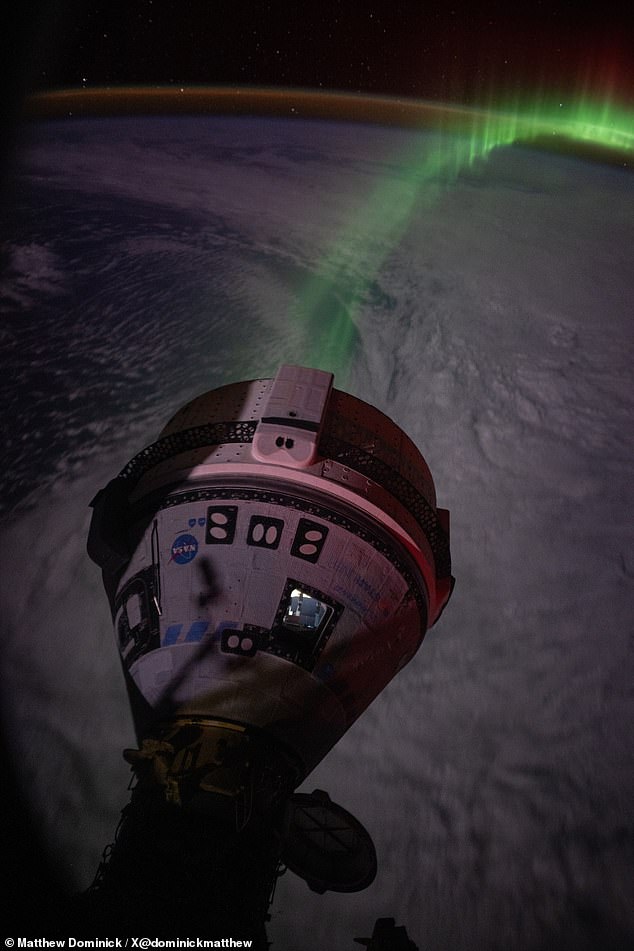
Incredible: NASA astronaut Matthew Dominick shared his view of auroras above Earth as seen from the International Space Station (ISS) with Boeing’s Starliner in the foreground.
Dominick has been aboard the ISS since early March when he took a trip aboard SpaceX’s Crew Dragon spacecraft.
Astronauts on the ISS have their own personal Internet connection, which means they can post to X, send emails and much more.
Speaking to
“The timing was ideal for the aurora to align well with the Starliner service module thrusters.”
An aurora is created by disturbances in Earth’s magnetosphere due to a stream of particles from the sun and is usually centered around the Earth’s magnetic poles – which is why it is known as the aurora borealis or australis.
Charged particles are expelled from the sun at maximum speeds before interacting with the Earth’s magnetic field.
Although in this video the aurora is green, its color depends in part on the molecules with which the charged particles interact.
The colors red and green tend to be characteristics of oxygen, pink and red are the signs of nitrogen, with blue and purple being the result of hydrogen and helium.
Although the clip doesn’t show exactly where the ISS was at the time, we do know that the ISS follows a circular path around our planet.
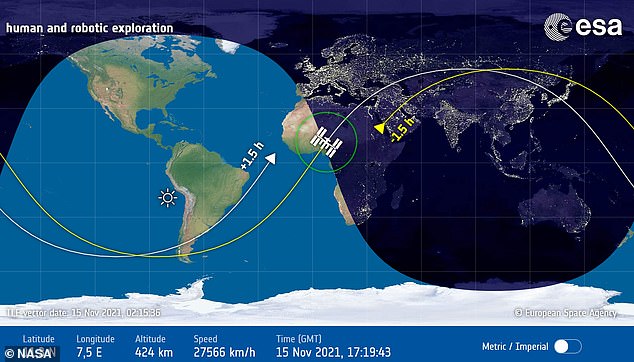
This image shows an orbit of the ISS around Earth, which takes up to 93 minutes. On a 2D map the orbit looks like a wave (but that’s because it’s a projection of a 3D path onto a 2D map)
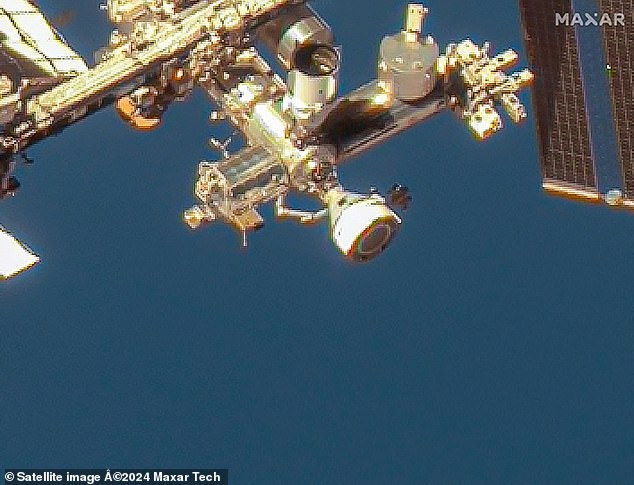
This image provided by Maxar Technologies taken June 7, 2024 shows the Boeing Starliner spacecraft docked at the forward port of the International Space Station (ISS) on the station’s Harmony module. Since Starliner is docked with the ISS, astronauts can still enter and exit Starliner as they please.
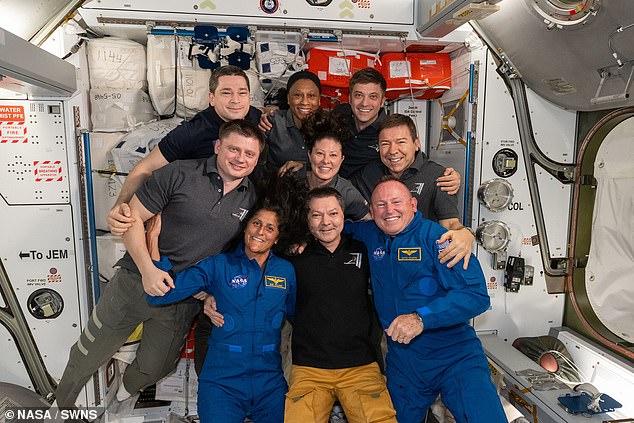
Crew aboard the ISS: Front, from left, Suni Williams, Oleg Kononenko and Butch Wilmore. Second row from left: Alexander Grebenkin, Tracy C. Dyson and Mike Barratt. In the background, Nikolai Chub, Jeanette Epps and Matthew Dominick
Also in the video, we can see the Starliner’s small square window being dramatically illuminated by brilliant bursts of bright light.
These are flashlights used by fellow NASA astronauts Butch Wilmore and Suni Williams, who took a trip to the ISS aboard the Starliner on June 5 and arrived the next day.
Wilmore and Williams were only supposed to stay on the ISS for a week, but ongoing problems with Starliner mean they can’t return home yet and have to stay longer than planned.
Authorities discovered five different leaks in the Starliner’s propulsion system, which would allow the craft to navigate through space upon its return to Earth.
NASA says Starliner will return to Earth no earlier than Saturday, June 22, more than a week later than originally planned.
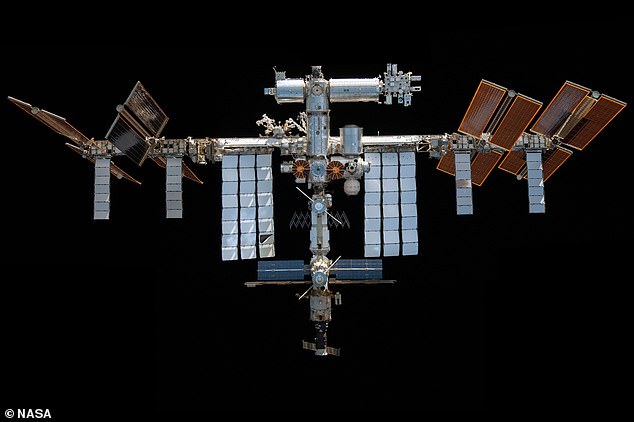
View from below the International Space Station (ISS) in November 2021, which maintains an orbit approximately 400 kilometers above Earth.
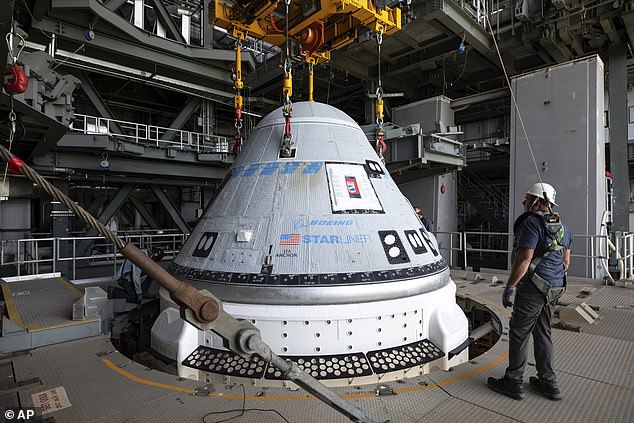
Starliner is lifted at the Space Launch Complex-41 Vertical Integration Facility at the Cape Canaveral Space Station in Florida, April 16, 2024.
“The additional time allows the team to finalize departure planning and operations while the spacecraft remains authorized to conduct emergency crew return scenarios within the framework of flight rules,” the statement said. NASA and Boeing in a press release.
Boeing is one of three companies participating in NASA’s Commercial Crew program, an initiative to transport teams of astronauts to the ISS on behalf of the space agency.
Elon Musk’s SpaceX, the most successful member of the program so far, made its first crewed launch to the ISS in May 2020, using its Crew Dragon spacecraft.
It has completed nine crewed launches in total – and will do several more later as part of the program – while rival Boeing lags behind.
Boeing’s first crewed launch was originally scheduled to take place in 2017, but various delays pushed back the mission’s launch several times.
